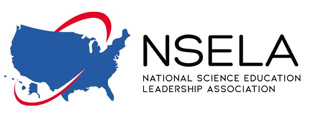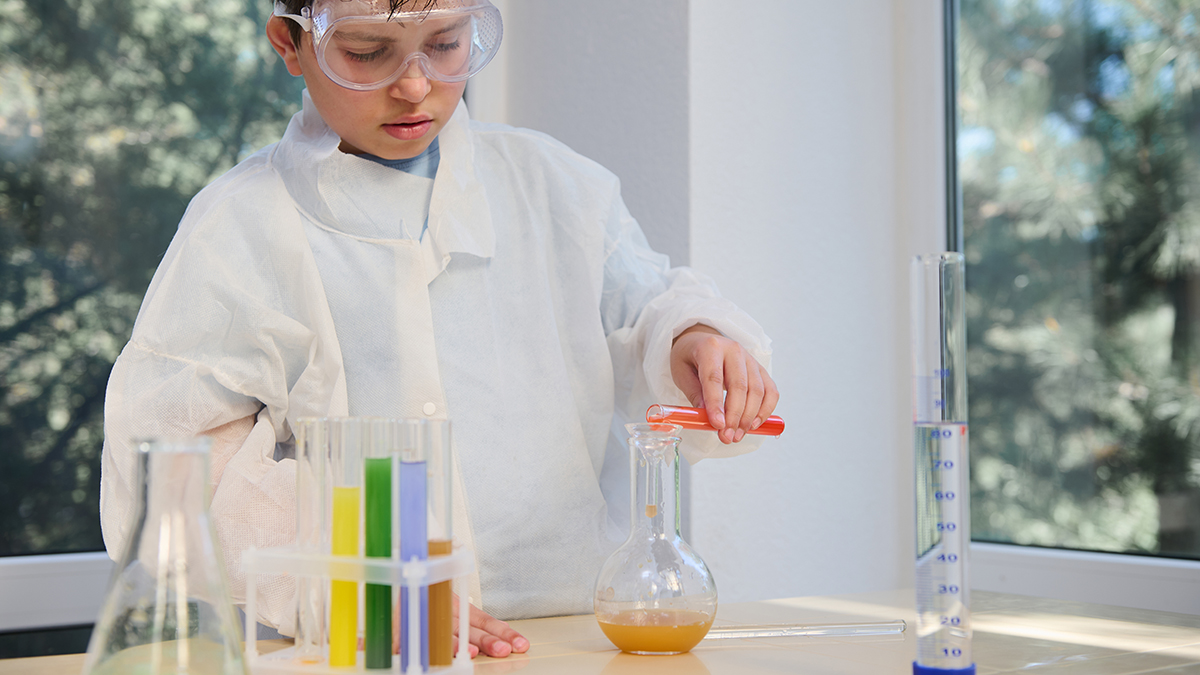Leadership Matters
Leadership’s Role in Elementary Science Safety
The launching of the Soviet satellite Sputnik in 1957 initiated massive science curriculum reform in the United States. Fast forward to the new millennium. Over the past decade, elementary or primary level educators have been doing more hands-on science activities than ever, with support from initiatives like the Next Generation Science Standards (NGSS) released in 2013.
Yet still, few elementary educators receive training in potential safety hazards and how to take the appropriate safety actions for a safer teaching/learning experience. Leadership (science supervisors and building administrators) have a major role in helping to turn the tide on this critical problem. It is not only a curriculum and instruction process issue but also a legal issue under duty or standard of care requirements. Leadership needs to address, embrace, and provide legal safety standards and better professional safety practices for hands-on science. What then are some of these specific areas which leadership needs to focus on for a safer teaching/learning experience in elementary science?
Important Safety Practices
How can school leadership help make hands-on elementary science safer for both students and teachers? There is no magic bullet, but there are some basic areas of focus. School leadership needs to consider addressing the following safety items to help make the hands-on science experience for students an enriching, rewarding, and safer learning experience in the elementary instructional space:
Facility design
Depending what type of instructional spaces is used to teach science (general classroom or a formal science laboratory) will dictate which OSHA legal standard is required. In a general classroom, those schools under Federal OSHA or a State-OSHA Plan are required to have employees follow the Hazard Communication Standard (29 CFR 1910.1200: www.osha.gov/laws-regs/regulations/standardnumber/1910/1910.1200). If there is a formal science laboratory used at the elementary level, schools under Federal OSHA or a State-OSHA Plan are required to have employees follow the OSHA Occupational exposure to hazardous chemicals in laboratories Standard or the OSHA Laboratory Standard (29 CFR 1910.1450: www.osha.gov/laws-regs/regulations/standardnumber/1910/1910.1450). Non-OSHA states public sector schools may have similar standards in their Departments of Labor.
Safety training
Safety training for school employees and students is crucial! It sets the tone and expectations for appropriate better professional safety practices and meeting of legal safety standards. Look at safety protocols for all elementary level science hands-on activities—be it working with soil to using a hot water. School leadership needs to meet the legal requirements (e.g., OSHA, NFPA, etc.) for teaching science as the employer for their employees; e.g., teachers instructing science class hands-on activities. Training needs to be provided upon initial employment, changes in teaching assignments, changes in chemical hazards, and so on. Students also need safety training at the beginning of the academic year and before starting any hands-on activities.
Acknowledgment form
Help elementary teachers share safety expectations with both the students and parents/guardians by using a written acknowledgment form. The acknowledgment form lets the student and parents know hands-on science activities are fun but also need to address safety issues. The acknowledgment form lets the students and parents know there are better professional safety practices that must be followed to make it safer in the science instructional space. This protects not only the students but also the teacher from a legal perspective. NSTA has a sample safety acknowledgment form designed specifically for elementary teachers titled: “Elementary Science Safety Acknowledgment Form.” (https://static.nsta.org/pdfs/SafetyAcknowledgmentForm-ElementarySchool.pdf)
Reinforcement
Throughout the school year, before each hands-on activity is performed, instruct teachers to review and reinforce safety expectations. It should not be a drive-by experience once a year but an ongoing reinforcement opportunity. School leadership needs to provide written feedback following classroom observations with an emphasis on safety during hands-on instruction.
Age-Appropriate Science Activities
Work with teachers to make sure hands-on activities are age appropriate for their students. Can they developmentally handle both the concepts, content, application, and safety behaviors required?
Keep It Simple and Organized
Make sure teachers understand that young students learn science the best by making things simple, not complicated. Simplify activities by providing few steps in the process, with reinforced summaries and assessments.
Provide Appropriate Instructional Space Supervision
Work with teachers to encourage having volunteers to work with students doing hands-on science activities with about a 1:5 ratio. This allows all students to be involved in a safer way—and to stay involved in the learning experience.
School Health and Safety Protocols
Make sure you have provided all relevant health and safety protocols required by your school for teachers—e.g., evacuation, lockdowns, use of fire extinguishers, and so on.
Housekeeping
Do regular spot checks on instructional space housekeeping. This is critical in assuring the removal of all trip/fall and slip/fall hazards from the work area when doing hands-on science activities. This includes items such as backpacks, books, clothing, spilled liquids on the floor, etc.
Food and Drink Prohibition
Teachers need to be made aware that science work areas should be void of food and drink during any hands-on activities. There are potential cross-contamination issues that can lead to health hazards for both students and teachers. Once hands-on activities are completed, worktables should be washed with soap and water. Floors should be swept and, in some cases, washed.
Personal Protective Equipment (PPE)
Teachers need training in how to conduct a potential safety hazard analysis and appropriate safety actions to be taken prior to undertaking hands-on activities. For example, are safety glasses with side shields being used with hazardous solids or projectiles? Are indirectly vented chemical splash goggles being used when working with hazardous liquids? On occasion, hand protection may be required such as vinyl gloves, and clothing protection or aprons.
Security
Provide lockable and secure cabinets and/or storerooms for teachers to make sure all chemicals and equipment are secured under lock and key. There could be legal issues for teachers and supervisors/administrators under duty or standard of care if a student takes science materials out of the instructional space and get hurt in the process of using them.
Practice Make Perfect
Remind teachers that they should have done the hands-on activity prior to having students doing it. This goes for all activities, including commercially prepared kits, activities recommended by peers, and so on. Again, this helps to determine the potential safety hazards, resulting health and safety risks, and appropriate safety actions to be taken.
Hygiene
It is important that the teacher enforce the washing of students’ hands with soap and water after completing the hands-on activity. This is appropriate whether gloves are used or not.
Equipment
Teacher and supervisors/administrators need to be very careful in what equipment is used at the elementary/primary levels, especially if it includes hand-me-downs from the middle or high school. Also watch for donated equipment. Heat sources are especially problematic. Under no circumstances should alcohol lamps be used, save the few that are designed with safety in mind. Gas burners are another faux pas. Hot plates may be used under adult supervision. In some cases, candles could also be used, again under adult supervision in the upper elementary grades.
Flora and Fauna
Caution must be exercised when bringing plants or animals into the elementary instructional space. Teachers should never bring in animals caught in the wild! They may have a disease that could challenge both the health of students and teachers. Be sensitive to students with allergies, especially respiratory. Know your plants—especially those which may be poisonous or toxic. Make sure the teacher involves the school nurse to determine students with medical issues such as asthma or skin sensitivity prior to doing work with plants and animals.
Blood and Body Fluids
Under no circumstances should supervisors or administrators allow teachers to use any blood or body fluids in their instructional spaces. This includes cheek cells and blood typing. The risk of bloodborne pathogens is too high!
Hazardous Chemicals
Help teachers become trained on how to use Safety Data Sheets in making judgments about chemical use. This includes alcohols and other flammables, indicators, vinegar, hydrogen peroxide, acids, and other chemicals. Don’t assume because a product such as vinegar is used at home in the kitchen that it is safe to be used by students in a science hands-on activity! Personal protective equipment would be required as per section VIII of the Safety Data Sheet!
Fungi, Molds, Bacteria, Other Microbes
Given the potential exposure to MRSA, Strep bacteria, molds, and so on, teachers should not involve students in any activities requiring the culturing of microbes. Use preserved slides or bacteria slides made from live yogurt or kefir cultures only. Again, the risk is too high, especially with the potential for immune suppressed students.
Final Thoughts
In summary, the safety components listed above are only an outline for making the hands-on science experience safer at the elementary level with the direct help and responsibility of school leadership (science supervisors and building administrators). Make use of peers, professional conferences, publication articles/safety columns, and safety training to enhance your teachers’ effectiveness in the science instructional space. Science supervisors and elementary school administrators need to be directly involved in overseeing safety in their school’s science instructional spaces for safer science teaching/learning experiences.
Ken Roy (safesci@sbcglobal.net) is Director of Environmental Health and Safety for Glastonbury Public Schools in Glastonbury, Connecticut, and NSTA’s Chief Science Safety Compliance Consultant/Blogger. He also serves as the NSELA Director of Safety. Follow Dr. Roy’s NSTA Safety Blog Commentaries at www.nsta.org/blog#tab-safety.

Leadership Safety Teacher Preparation Elementary



